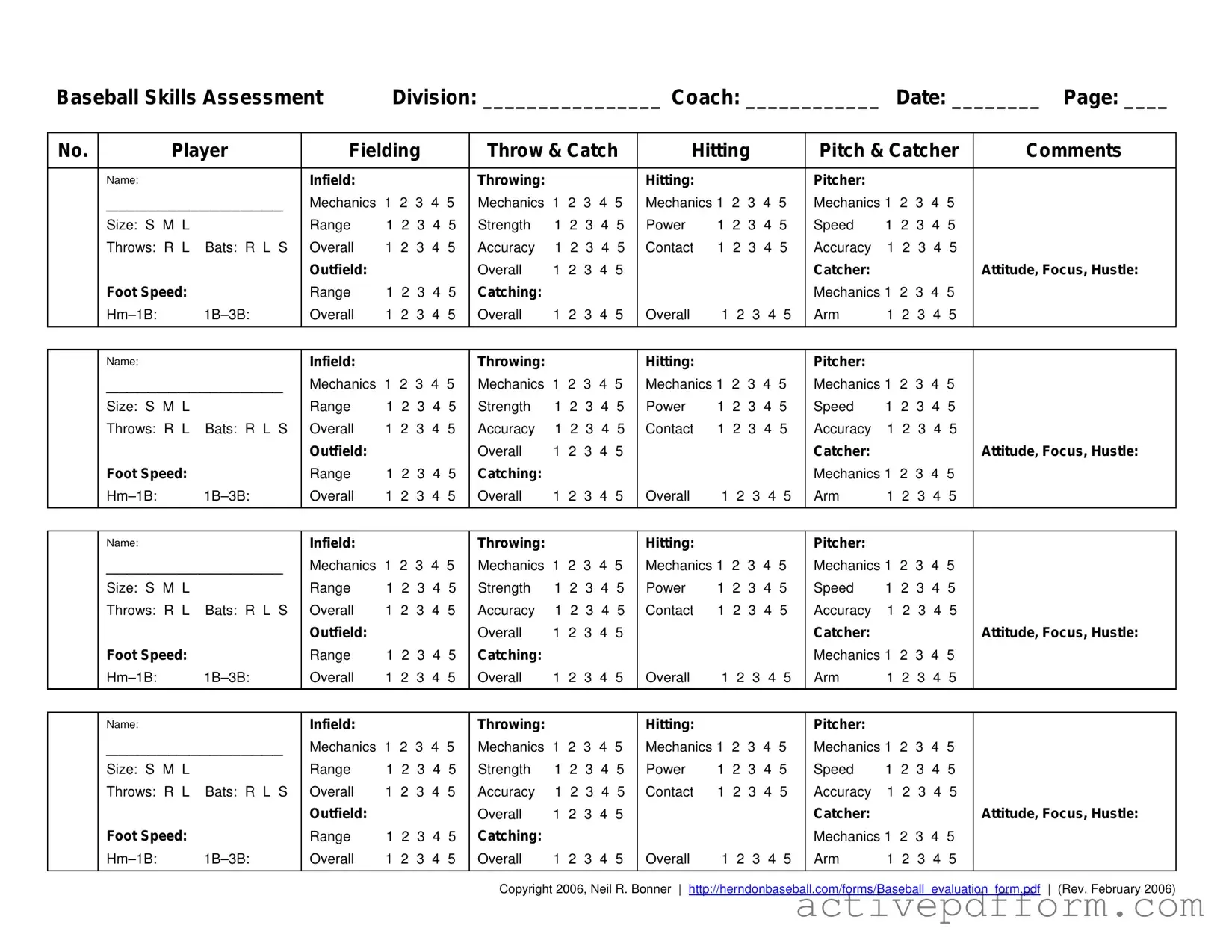Free Baseball Assessment Template
The Baseball Skills Assessment Form is a standardized tool designed to evaluate players' abilities during tryouts. It provides coaches with a structured way to score various skills, including fielding, throwing, hitting, and pitching. Completing this form ensures a fair and comprehensive assessment of each player's capabilities.
To participate in the evaluation process, please fill out the form by clicking the button below.
Access Baseball Assessment Editor Here

